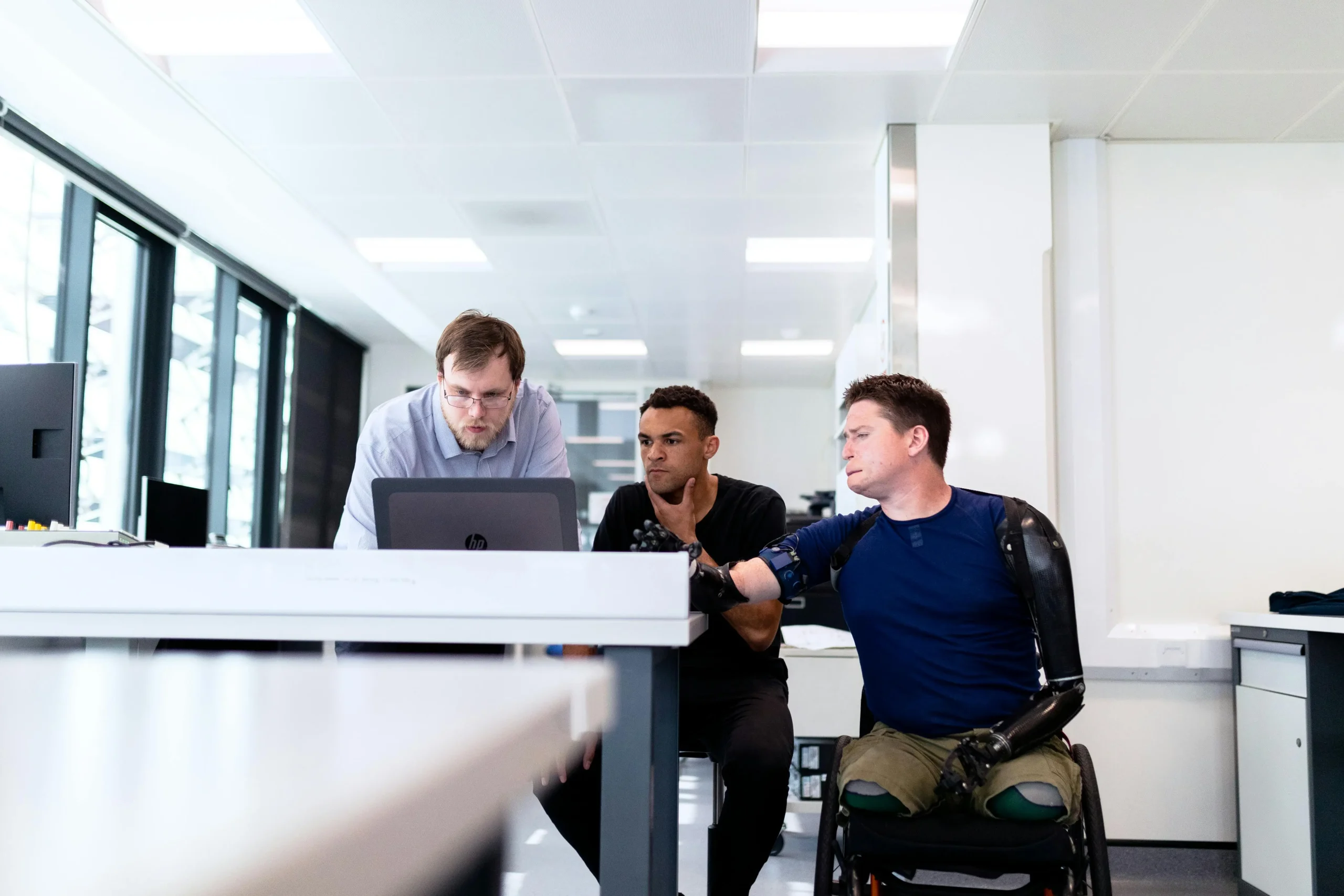In today’s diverse workforce, the importance of equity in employment cannot be overstated. For disabled workers, achieving equity goes beyond mere access to job opportunities; it involves dismantling the systemic barriers that have historically limited their potential. This blog explores the multifaceted challenges faced by disabled workers and offers actionable strategies to foster a more inclusive work environment.
Understanding the Barriers
Disabled individuals encounter a range of barriers in the job market, which can be broadly categorized into physical, attitudinal, resource-related, and structural barriers. Let’s delve into each of these categories.
1. Physical Barriers
Many workplaces remain inadequately designed for accessibility. Common issues include:
- Inaccessible Facilities: A significant number of workplaces lack ramps, wide doorways, or elevators, making it difficult for wheelchair users and individuals with mobility impairments to navigate the environment.
- Insufficient Restroom Accessibility: Many restrooms are not equipped with necessary features such as grab bars or sufficient space for maneuvering mobility aids.
- Workstation Design: Workstations may not accommodate the needs of all employees. For example, desks that are too high for someone in a wheelchair can hinder productivity.
2. Attitudinal Barriers
Attitudes towards disability often shape hiring practices and workplace culture. These barriers include:
- Stereotypes and Misconceptions: Many employers harbor stereotypes about disabled workers, believing they are less capable or require more support than their non-disabled peers. Such misconceptions can lead to discriminatory hiring practices and missed opportunities for talented individuals.
- Fear of Accommodations: Employers may be hesitant to hire disabled workers due to fears of high accommodation costs or perceived disruptions to workflow. However, these concerns are often unfounded and can be addressed with proper planning.
3. Lack of Resources
Access to resources is vital for disabled job seekers. Unfortunately, many face challenges such as:
- Limited Mentorship Opportunities: Disabled individuals often lack mentors who understand their unique challenges and can guide them through career development.
- Inadequate Career Counseling: Many career services do not offer tailored advice or resources specifically for disabled job seekers, leaving them without crucial support in navigating the job market.
4. Inflexible Work Environments
Rigid work environments can create significant barriers for disabled workers. Key issues include:
- Standardized Work Hours: Many employers require strict adherence to traditional work hours, which may not be feasible for disabled individuals who may need flexible schedules to manage their health.
- Lack of Remote Work Options: Remote work opportunities have become increasingly popular; however, many companies still do not offer this option, limiting accessibility for disabled workers.
The Importance of Equity in Employment
Creating an equitable workplace is not only a moral obligation but also a strategic business decision. Research consistently shows that diverse teams drive innovation and enhance problem-solving capabilities. According to a McKinsey report, companies in the top quartile for gender and racial diversity are 35% more likely to outperform their competitors. This diversity of thought can be enriched by the unique perspectives that disabled workers bring to the table.
Additionally, organizations that prioritize equity experience higher employee satisfaction, improved retention rates, and a stronger company reputation. By embracing equity, businesses can foster a culture of inclusivity that benefits all employees.
Actionable Solutions for Employers
Creating an equitable environment for disabled workers requires intentional action and commitment. Here are several strategies that employers can implement to address the barriers faced by disabled workers:
1. Conduct Accessibility Audits
Employers should regularly assess their facilities and practices to identify physical barriers. This involves:
- Evaluating Workplace Design: Conduct thorough evaluations of the workplace layout, entrances, restrooms, and workstations to ensure they are accessible to all employees.
- Involving Disabled Employees: Engage current employees with disabilities in the assessment process to gain insights into their experiences and recommendations for improvement.
2. Foster an Inclusive Culture
Creating a workplace culture that values diversity and inclusion is essential. Employers can take several steps to foster this culture:
- Implement Training Programs: Provide training on disability inclusion for all employees. This training should focus on dispelling myths about disability and fostering empathy and understanding.
- Encourage Open Dialogue: Create an environment where employees feel comfortable discussing disability-related issues and sharing their experiences. Open dialogue can lead to increased awareness and support among colleagues.
3. Provide Flexible Work Options
Flexibility in work arrangements can significantly enhance the experience of disabled workers. Employers should consider:
- Remote Work Opportunities: Offering remote work options can help disabled workers manage their health while maintaining productivity.
- Flexible Hours: Allowing employees to set their own hours can accommodate individual needs, enabling better work-life balance.
4. Develop Targeted Recruitment Strategies
To improve outreach and recruitment of disabled candidates, employers can:
- Collaborate with Disability Organizations: Partnering with organizations that focus on disabled talent can help employers connect with potential candidates.
- Utilize Specialized Job Boards: Use job boards specifically catering to disabled job seekers, such as Equal Capable Jobs, to expand the talent pool.
5. Invest in Professional Development
Providing resources for professional growth can empower disabled employees. Employers should:
- Offer Training Programs: Provide training and skills development workshops that cater specifically to disabled workers.
- Establish Mentorship Programs: Create mentorship initiatives where disabled employees can connect with experienced professionals who can guide them in their careers.
6. Create Employee Resource Groups (ERGs)
Establishing ERGs can foster community among disabled employees. These groups can:
- Provide Support Networks: ERGs can serve as support systems where disabled employees can share experiences, resources, and encouragement.
- Advocate for Inclusive Practices: These groups can advocate for policy changes and initiatives that promote inclusivity within the organization.
7. Implement Fair Evaluation Processes
Employers should regularly review their evaluation and promotion processes to ensure fairness. This can involve:
- Anonymous Evaluations: Consider using blind recruitment methods to reduce bias in the hiring process.
- Regular Feedback Mechanisms: Establish regular feedback systems that allow employees to express concerns and suggest improvements in evaluation criteria.
Conclusion
Equity in employment for disabled workers is an essential goal that requires commitment from all stakeholders. By recognizing the barriers that disabled individuals face and actively working to address them, employers can create a more inclusive workplace that values every employee’s contributions. Embracing equity not only benefits disabled workers but also enhances overall workplace culture and productivity. It’s time for businesses to lead the way in fostering an inclusive environment where everyone can thrive.













